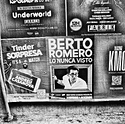Hi there,
I’m about two days away from making my first salt prints and have a few questions about humidity.
I bought a small digital device to keep an eye on humidity in the darkroom and so far it has gone from 57% during rainy fall weather to 27% during a winter dry spell. Is this a normal fluctuation?
What would be considered the ideal relative humidity when hand coating paper prior to exposing it...or...is it easier to maintain the relative humidity somewhere in the middle at as constant a level as possible?
Thanks in advance.
I’m about two days away from making my first salt prints and have a few questions about humidity.
I bought a small digital device to keep an eye on humidity in the darkroom and so far it has gone from 57% during rainy fall weather to 27% during a winter dry spell. Is this a normal fluctuation?
What would be considered the ideal relative humidity when hand coating paper prior to exposing it...or...is it easier to maintain the relative humidity somewhere in the middle at as constant a level as possible?
Thanks in advance.






